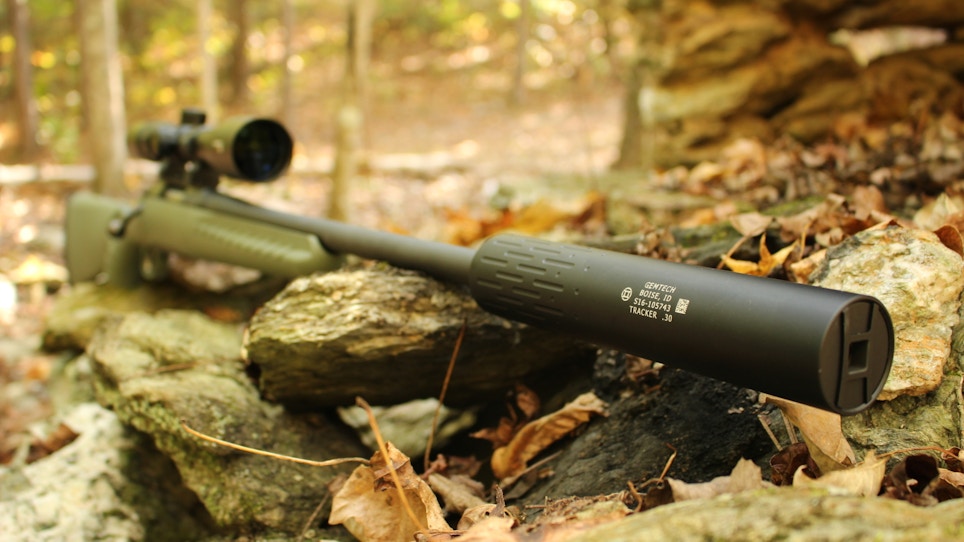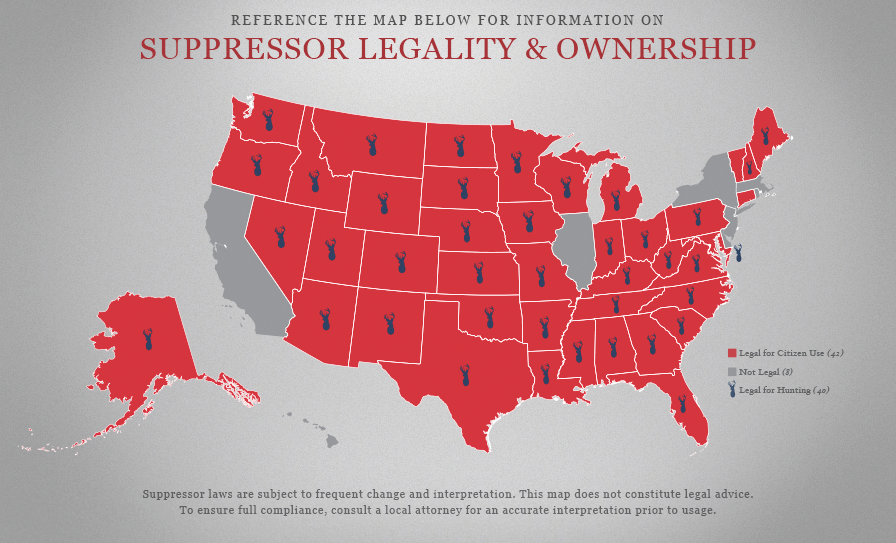In the past five years, 18 states have legalized hunting with a suppressor, while another 22 states already allowed for it. Some states have predator-only policies, while others allow suppressors for all game. Suppressor ownership has doubled over the past five years to more than 500,000. With suppressors becoming more mainstream everyday, people are realizing the benefits of shooting suppressed. Do these benefits transition over to hunting? Should you be buying a suppressor? Let’s find out.
Often called a silencer, a suppressor doesn’t silence a rifle. It will dampen and remove a large amount of the rifles report though. As extremely hot and pressurized gasses exit your rifle barrel after ignition of a bullet, they collide with much cooler molecules in the air. This rapid expansion of gas, heat and pressure creates the loud bang you hear when firing a rifle. A suppressor has built-in chambers or baffles that give the hot gas time to expand and cool inside the suppressor. This reduces the noise signature of the blast by around 30 dB.
The average .223 Rem., fired from a rifle is around 165 dB. A suppressor will lower that same rifle’s report down around 134 dB. That’s lower than the OSHA-approved safety rating for hearing, which is set at 140 dB. While it doesn’t make your deer rifle silent, it drastically reduces the obnoxious bang down to a safe level for your ears.
The majority of the sound leftover during a suppressed shot is actually a super-sonic crack created by the bullet. Most centerfire deer cartridges shoot more than 2,000 fps. That’s nearly double the speed of sound. Unlike a sonic boom, which is created from something as large as an aircraft, a sonic crack is made from a projectile the size of a bullet. The sound is similar to the crack of a .22 LR. If you can get rid of the sonic crack, you can achieve shots in the sound range of a pellet rifle. I’ll share more on this idea later.
Not only does a suppressor remove the obnoxious blast from a rifle, but it also helps smooth out recoil. The combination of a loud blast and then a punch in the shoulder from shooting a deer rifle, especially a bolt-action rifle, can cause many shooters to create a flinch. This flinch can dramatically affect shot performance out to as little as 100 yards. A suppressor actually reduces and smooths the recoil, instead of catching the sharp, quick pop to the shoulder from an unsuppressed rifle. I’ve found that reducing just these two elements has improved my 8-year-old son’s accuracy when shooting.
A suppressor is a lot like a scope. It’s designed to increase your accuracy and enjoyment of shooting — with the added benefit of protecting your hearing. Many hunters don’t wear ear protection in the stand, so each time they shoot a deer, they’re causing irreversible hearing damage. Hunting suppressed mitigates that risk.
Doesn't Purchase Come With Some Hassle?
This is a fair point. You can’t go into your local gun store, point out the suppressor that you want, pay for it and take it home. Unfortunately, there is a waiting game involved. A suppressor is a Class III firearm, which is regulated through the National Firearms Act (NFA). Only a Federal Firearms License (FFL) Class III dealer can transfer a NFA item. The Class III dealer must request a transfer for the suppressor through the Bureau of Alcohol, Tobacco, Firearms and Explosives (ATF) via its Form 4. The U.S. Government charges $200 (to the suppressor buyer) to process this order and once approved comes back in the form of a tax stamp. At this point the buyer can go to the selected Class III dealer and pick up the suppressor they purchased. This whole process can take five to eight months. When I purchased my first suppressor in 2015, it took just less than six months.
So in the end, there is some paperwork to fill out, but your local Class III dealer will help you with that and let you know what to do. The rest of the time you’ll spend trying not to think about the new toy that you just bought. Once Uncle Sam cashes your $200 check and you get the approval, then you can bring your new suppressor home to meet the family.







